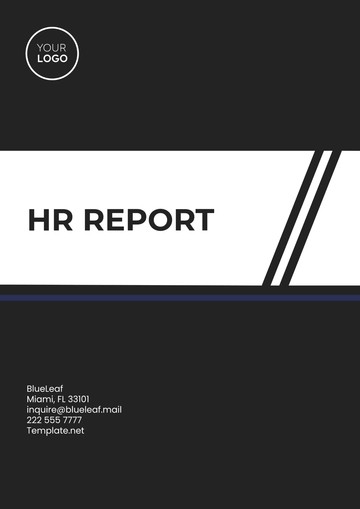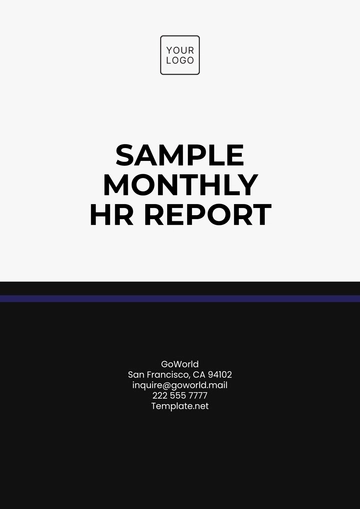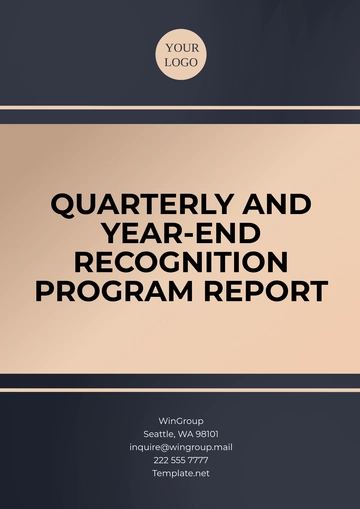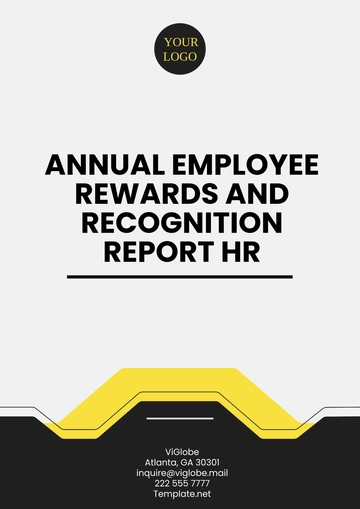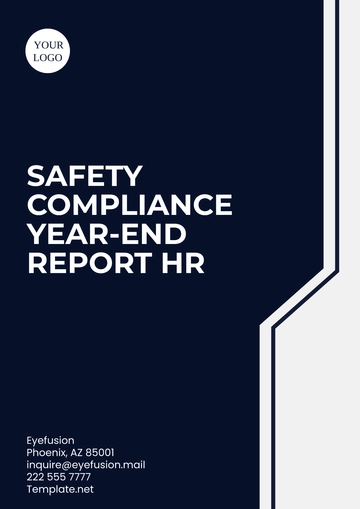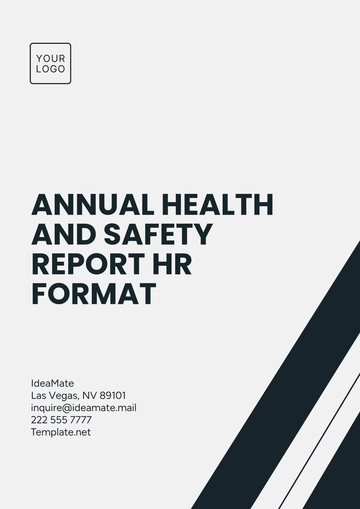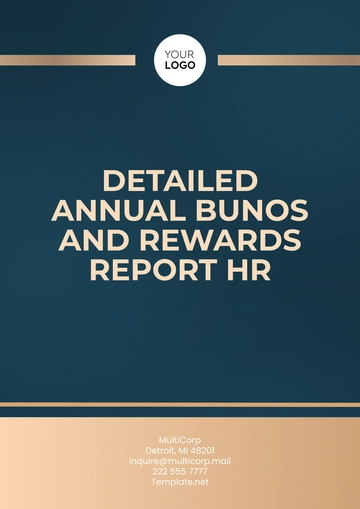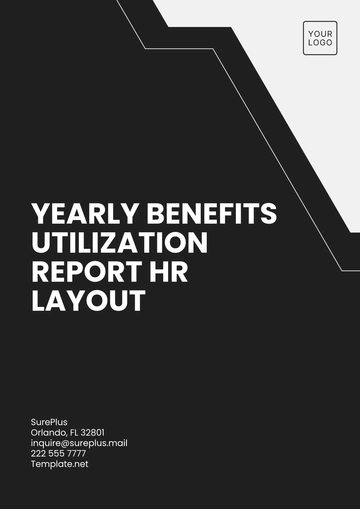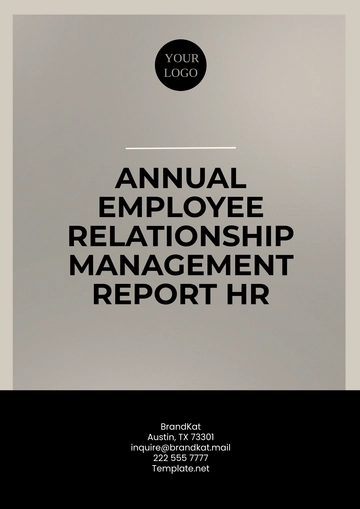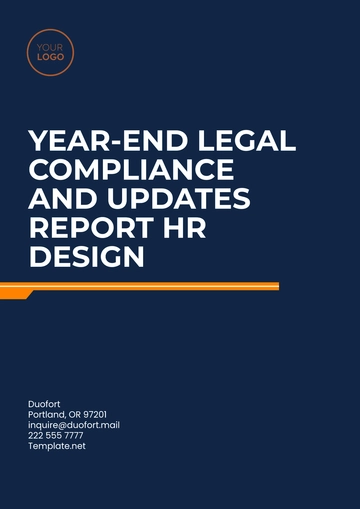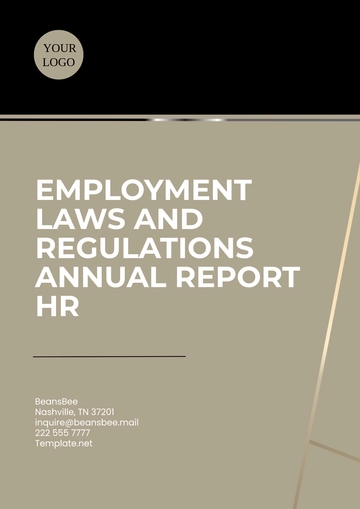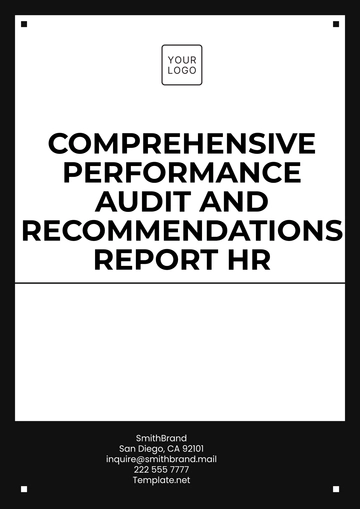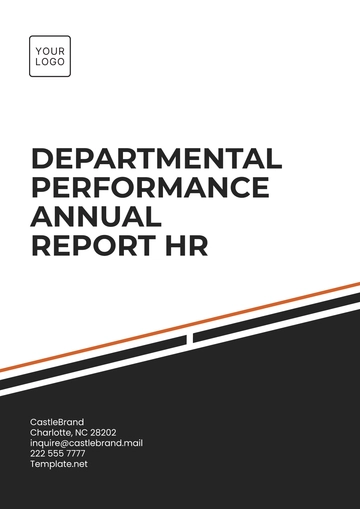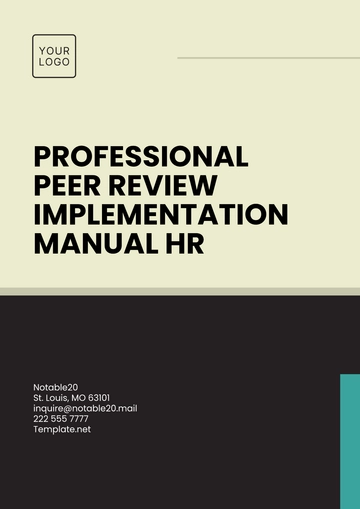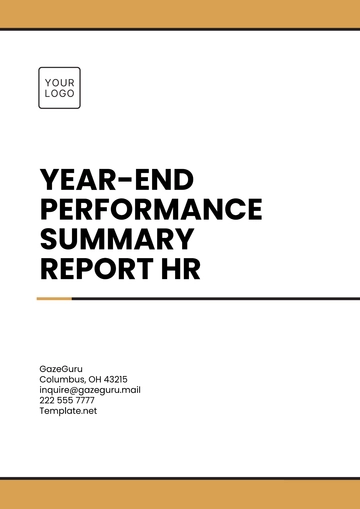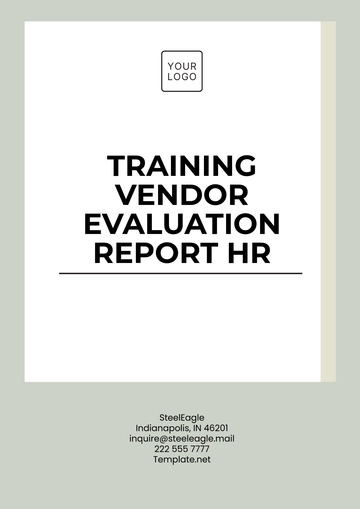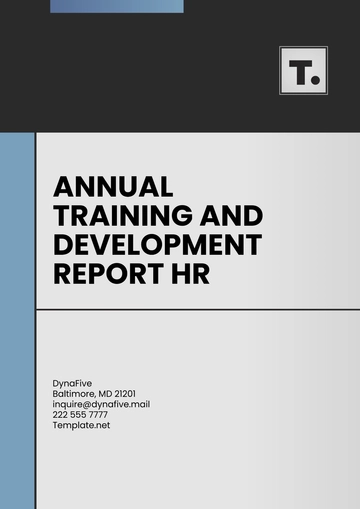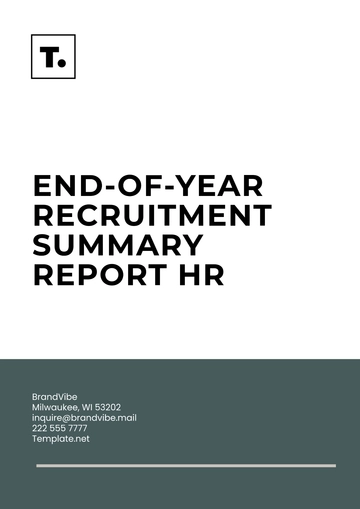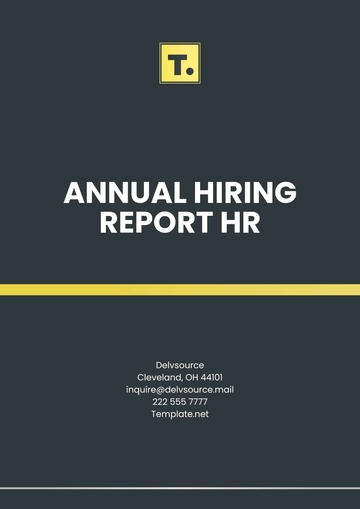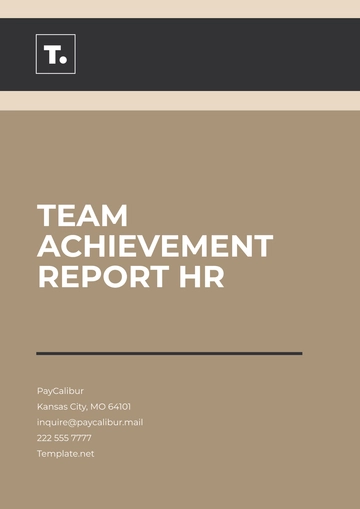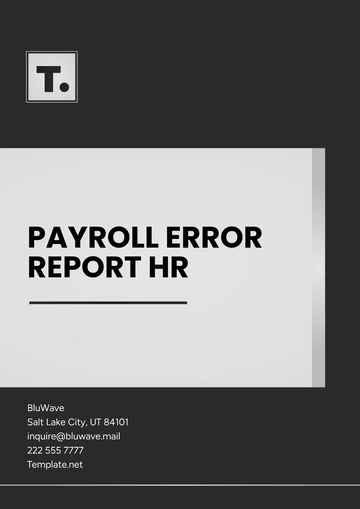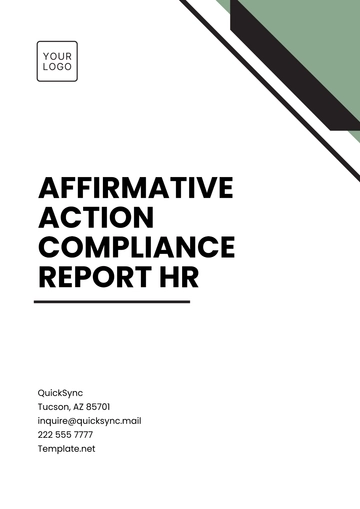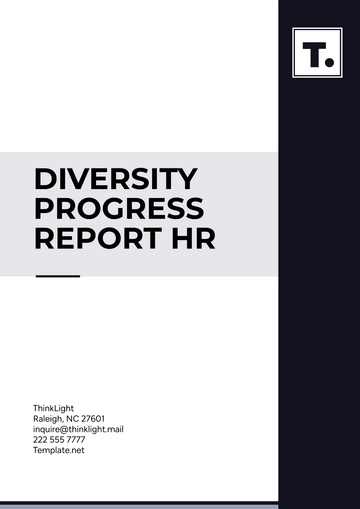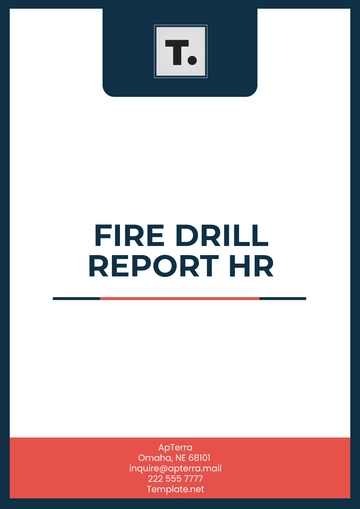Free Comprehensive Relationship Audit & Recommendations Report HR
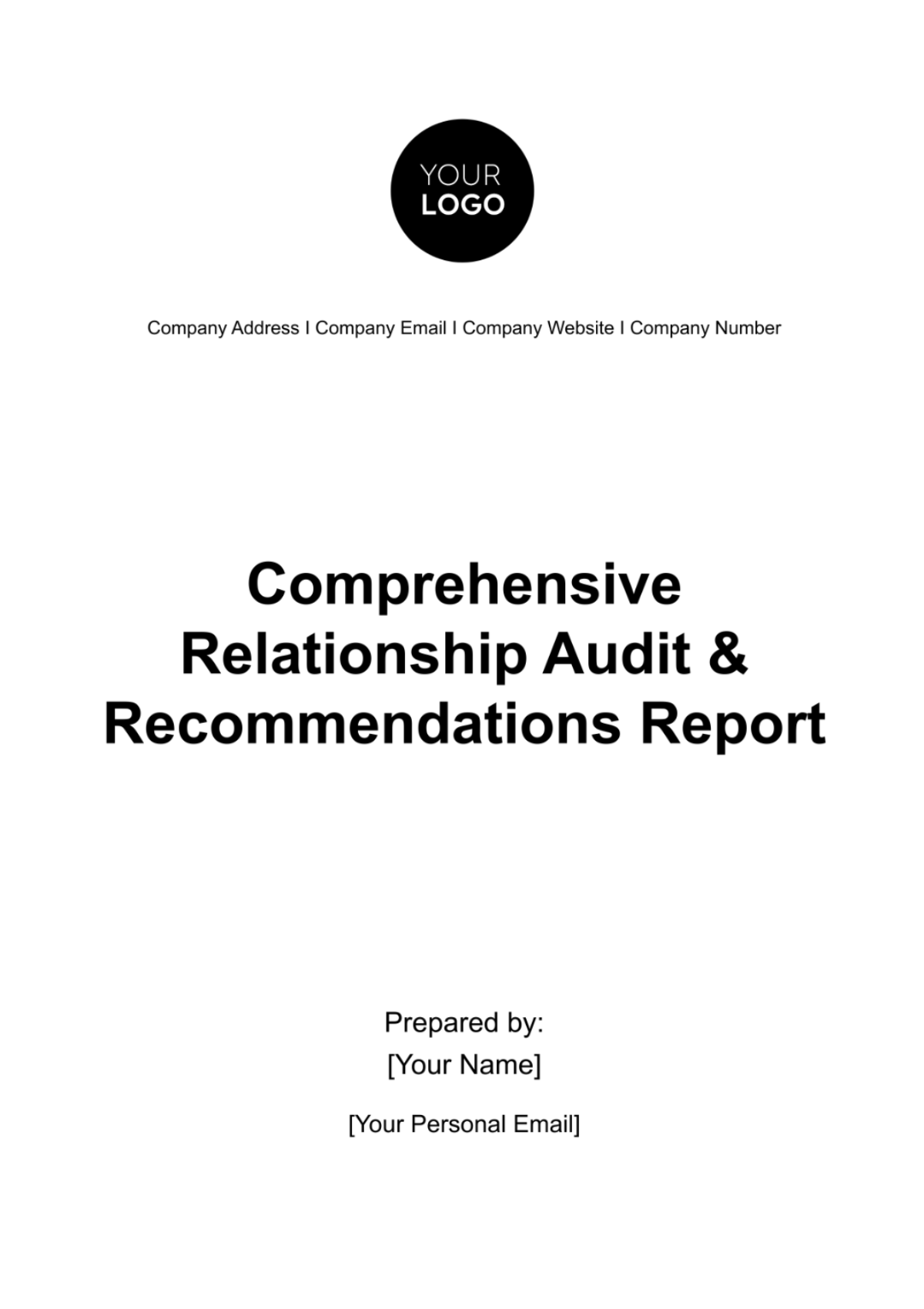
Executive Summary
The primary objective of this comprehensive relationship audit was to critically assess the current interpersonal and interdepartmental dynamics within [Company Name]. Given the essential role that employee relationships play in fostering a healthy workplace environment, productivity, and employee satisfaction, it became imperative to undertake this audit. This assessment aims to identify strengths, areas of concern, and opportunities for improvement to ensure [Company Name] continues to thrive and remains a preferred workplace for its talented pool of professionals.
Key Findings
A notable 70% of employees rated their satisfaction with workplace relationships as 'Good' to 'Excellent'. However, 20% expressed concerns related to interdepartmental collaborations.
Approximately 65% of employees feel they have adequate access to leadership, though feedback suggests a desire for more regular and open channels of communication.
There seems to be a mixed perception of conflict resolution efficacy. While 50% believe conflicts are resolved in a timely and effective manner, the remaining 50% feel there's room for improvement.
Around 60% of employees are satisfied with collaborative initiatives, but they also expressed a need for more team-building exercises and platforms for cross-departmental projects.
Immediate Recommendations
Introduce platforms or events that can foster greater collaboration between departments, potentially reducing the 20% dissatisfaction rate.
Consider setting up monthly or quarterly open-house sessions or feedback forums where employees can communicate directly with leaders.
Organize training and workshops focusing on conflict resolution, aiming to equip both managers and employees with the skills and strategies to address disputes effectively.
Increase the frequency and variety of team-building exercises, ensuring they cater to the diverse needs and preferences of [Company Name]'s workforce.
Objectives
Gauge the health and effectiveness of interpersonal and interdepartmental relationships within the organization.
Identify areas of strength and concern in employee relationships
Provide actionable insights and recommendations to enhance workplace cohesion, collaboration, and overall employee satisfaction.
Scope
All departments within [Company Name].
Relationships at all levels, from entry-level staff to senior leadership.
Both formal and informal interactions, collaborations, & communication channels.
Methodology
Sample Size and Demographics
A total of 500 employees participated in the audit process, representing a diverse mix of:
Departments: Sales, IT, HR, Operations
Hierarchical Levels: Entry-level, Mid-level Management, Senior Management, and Leadership roles.
Tenure within [Company Name]: Ranging from newcomers to veterans with over 10 years in the company.
Data Collection Methods
Surveys
Focused Group Discussions
Interviews
Analysis Tools and Techniques
SPSS
Thematic Analysis
Limitations of the Audit
Participation bias, as not every employee took part in the audit.
Potential influence of current events or recent incidents on employee feedback.
Current State Analysis
Overview of Existing Relationship Dynamics
The prevailing dynamics at [Company Name] are a blend of traditionally held values and evolving modern workplace practices. The camaraderie between teams, the flow of communication from leadership to entry-level employees, and the shared vision for the company's future all contribute to the organization's overall relational atmosphere.
While many employees have indicated a sense of belonging and value in their roles, there are noted areas where there's a perceivable gap in relationship dynamics, particularly between certain departments or hierarchical levels. This has occasionally led to bottlenecks in decision-making and project execution.
STRENGTHS
| AREAS OF CONCERN
|
Historical Trends and Patterns
A review of past relationship audits and feedback mechanisms shows certain recurring themes and patterns that have persisted over time. This section provides a tabulated view of some key trends over the past five years:
Year | Dominant | Dominant | Overall Relationship Health Score |
2079 | Strong team spirit | Lack of cross-departmental projects | 78% |
2080 | Increased open communication channels | Conflict resolution delays | 80% |
2081 | Leadership accessibility | Interdepartmental silos | 81% |
2082 | Cross-functional collaborations | Need for more feedback mechanisms | 82% |
2083 | Enhanced training & development | Lack of mentorship programs | 83% |
Findings
To understand the core of relationship dynamics within [Company Name], we turned our focus to the most valuable stakeholders: our employees. Their feedback serves as a compass, guiding our path forward and highlighting areas that need our immediate attention. The table below encapsulates the sentiments of our workforce across various categories, painting a comprehensive picture of our strengths and the challenges ahead.
A notable 70% of employees rated their satisfaction with workplace relationships as 'Good' to 'Excellent'. However, 20% expressed concerns related to interdepartmental collaborations.
Approximately 65% of employees feel they have adequate access to leadership, though feedback suggests a desire for more regular and open channels of communication.
There seems to be a mixed perception of conflict resolution efficacy. While 50% believe conflicts are resolved in a timely and effective manner, the remaining 50% feel there's room for improvement.
Around 60% of employees are satisfied with collaborative initiatives, but they also expressed a need for more team-building exercises and platforms for cross-departmental projects.
Stakeholder Feedback
Engaging with stakeholders and capturing their feedback is a crucial component of the Relationship Audit process. This section presents a consolidated view of the feedback obtained from various stakeholders, offering a multi-dimensional perspective of the existing state of relationships within [Company Name].
Positive Comments | Areas of Improvement | |
Employee | Employees often cited the camaraderie among team members, the supportive environment, and the company's commitment to employee well-being as key strengths. | Some employees expressed a desire for clearer communication channels, especially between different departments, and a more streamlined feedback process. |
Leadership | Leadership noted the resilience and adaptability of teams, especially during challenging project phases or market fluctuations. | Some leaders expressed concerns over silos within the organization and emphasized the need for more cross-departmental initiatives. |
External Stakeholder | Many stakeholders praised [Company Name]'s professionalism, timely communication, and the cohesive presentation of teams during collaborative efforts. | A few stakeholders mentioned occasional communication lags, suggesting the potential need for a more integrated external communication strategy. |
Benchmarking Analysis
Benchmarking our internal relationship dynamics against industry standards provides insights into where [Company Name] stands in the broader landscape and what can be aspired to.
Comparative Analysis with Industry Standards
The following table provides a comparative analysis of [Company Name]'s relationship health metrics against prevailing industry standards:
While [Company Name] surpasses the industry average in certain metrics, there's room for improvement in others, highlighting potential focus areas.
Best Practices from Leading Organizations
Examining best practices from industry leaders provides a roadmap for potential improvements. The table below showcases a few of these practices and the leading organizations implementing them:
Best Practice | Leading Organization |
Monthly cross-departmental meetings | Company A |
360-degree feedback mechanisms | Company B |
Dedicated relationship management teams | Company C |
External communication integrator software | Company D |
Adopting or adapting these best practices could serve as a catalyst for enhancing relationship dynamics within [Company Name].
Gap Analysis
A comprehensive gap analysis allows us to understand the difference between where [Company Name] currently stands in terms of relationship dynamics and where it aspires to be. Recognizing these gaps provides the foundation for our subsequent recommendations.
Identified Gaps in Relationship Dynamics
Gap Area | Current State | Desired State |
Inter-departmental Communication | Sporadic and project-based | Regular and systematic |
Leadership Accessibility | Limited to scheduled sessions | Open-door and more frequent spontaneous access |
Feedback Mechanisms | Bi-annual and not always acted upon | Quarterly with prompt follow-up |
Cross-functional Collaborations | Occasional and often siloed | Frequent and integrated |
Impact of Gaps on Organizational Performance and Culture
Inter-departmental Communication: The current sporadic nature impacts project timelines and can lead to duplicated efforts.
Leadership Accessibility: Limited accessibility might hinder the flow of critical information and impede decision-making.
Feedback Mechanisms: Less frequent feedback and slow action can lead to decreased employee morale and engagement.
Cross-functional Collaborations: The lack of frequent collaborations can result in missed innovation opportunities and resource inefficiencies.
Recommendations
The recommendations provided aim to address the identified gaps. They are divided based on their implementation timelines: short-term, medium-term, and long-term.
Short-term Recommendations
Pilot a Monthly Inter-departmental Meeting: This would enhance communication between departments and help identify shared goals and challenges.
Institute 'Open Door Days' for Leadership: Allocate specific days where leadership is available for spontaneous discussions, fostering open communication.
Implement a Quarterly Feedback Mechanism: Move from bi-annual to quarterly feedback sessions, ensuring more frequent touchpoints with employees.
Medium-term Recommendations
Develop an Integrated Project Management Platform: This will facilitate cross-functional collaborations and ensure smoother project flows.
Provide Leadership Training on Accessibility and Communication: Equip leaders with the skills to be more accessible and communicative.
Create a Dedicated Relationship Management Team: This team will continuously monitor and address relationship dynamics within the organization.
Long-term Recommendations
Integrate Relationship Dynamics into Onboarding: Ensure that every new employee understands the importance of inter-departmental relationships from day one.
Develop a Company-wide Relationship Charter: This charter will set the standard for relationship dynamics, making expectations clear for everyone.
Invest in External Consultations and Workshops: Engage with external experts periodically to gain fresh insights and perspectives on improving relationship dynamics.
Action Plan
The effective transformation of our relationship dynamics necessitates a structured implementation strategy. We recommend a phased approach, starting with pilot initiatives in critical areas, gathering feedback, refining strategies, and then rolling out more broadly across [Company Name].
Roles and Responsibilities
For successful execution, it's imperative to assign clear roles and responsibilities. The following table maps out the key players and their respective duties:
Relationship Mgmt Team | Oversee the overall implementation; |
Department Heads | Facilitate department-specific initiatives; |
HR Department | Organize training sessions; |
IT Department | Support in tool integration for better collaboration |
Timeline and Milestones
A clear timeline ensures that the recommendations are implemented in a structured manner. The table below outlines key milestones:
Launch of Monthly Inter-departmental Meeting | January 15, 2079 |
First 'Open Door Day' for Leadership | February 5, 2079 |
Introduction of Quarterly Feedback Mechanism | March 10, 2079 |
Development of Project Management Platform | April 10, 2079 |
Establishment of Relationship Management Team | May 10, 2079 |
Monitoring and Evaluation
Monitoring Mechanisms
Monthly Check-ins: These sessions will track progress against the set milestones.
Feedback Tools: Real-time feedback tools will gauge employee sentiments post-implementation of each initiative.
Feedback Collection Post-Implementation
Surveys: Designed to capture employee feedback on the new changes.
Focus Group Discussions: To dive deeper into specific challenges or successes noted from the surveys.
Continuous Improvement Strategy
Review and Refine: Periodically assess the effectiveness of the implemented strategies and make necessary refinements.
Stay Updated: Keep an eye on industry best practices and emerging trends to ensure our strategies remain relevant and effective.
Budgetary Considerations
An effective Relationship Audit & Recommendations initiative requires adequate financial planning and resource allocation. In this section, we provide an estimate of the budgetary needs for the proposed strategies, ensuring [Company Name] can allocate funds optimally.
Training Workshops (External facilitators) | $25,000 |
Project Management Platform Subscription | $5,000 per annum |
Feedback Tools (Software & Integration) | $2,000 per annum |
Manpower (Salary for Relationship Management Team) | $150,000 per annum |
Return on Investment (ROI)
While the above figures represent the cost, it's important to recognize the value generated by improving relationship dynamics:
Enhanced Productivity: Better relationships can lead to streamlined operations and reduced redundancies.
Improved Employee Morale: A positive work environment can significantly reduce turnover and associated costs.
Strengthened Brand Image: An organization that prioritizes healthy relationships is likely to attract top talent and achieve higher stakeholder satisfaction.
The ROI, both tangible and intangible, is expected to far outweigh the initial investment.
Conclusion
The Relationship Audit & Recommendations Report presents a comprehensive analysis of the current relationship dynamics within [Company Name]. By identifying gaps and proposing actionable strategies, we aim to foster a culture of collaboration, open communication, and mutual respect.
As [Company Name] continues to evolve, it's crucial to ensure that the foundational relationships within the organization remain strong and adaptive. This not only ensures seamless operations but also positions the company as a preferred employer and partner in the industry.
While the road ahead may have its challenges, with a clear plan in place and the collective commitment of all stakeholders, [Company Name] is poised to elevate its internal relationships to unparalleled heights.
We look forward to the positive changes this journey will usher in and remain committed to supporting [Company Name] every step of the way.
- 100% Customizable, free editor
- Access 1 Million+ Templates, photo’s & graphics
- Download or share as a template
- Click and replace photos, graphics, text, backgrounds
- Resize, crop, AI write & more
- Access advanced editor
Evaluate and enhance workplace relationships with this in-depth Comprehensive Relationship Audit & Recommendations Report HR Template. Analyze current dynamics, gather stakeholder feedback, and benchmark against industry standards. Complete with recommendations, it's a holistic approach to improve organizational culture.
You may also like
- Sales Report
- Daily Report
- Project Report
- Business Report
- Weekly Report
- Incident Report
- Annual Report
- Report Layout
- Report Design
- Progress Report
- Marketing Report
- Company Report
- Monthly Report
- Audit Report
- Status Report
- School Report
- Reports Hr
- Management Report
- Project Status Report
- Handover Report
- Health And Safety Report
- Restaurant Report
- Construction Report
- Research Report
- Evaluation Report
- Investigation Report
- Employee Report
- Advertising Report
- Weekly Status Report
- Project Management Report
- Finance Report
- Service Report
- Technical Report
- Meeting Report
- Quarterly Report
- Inspection Report
- Medical Report
- Test Report
- Summary Report
- Inventory Report
- Valuation Report
- Operations Report
- Payroll Report
- Training Report
- Job Report
- Case Report
- Performance Report
- Board Report
- Internal Audit Report
- Student Report
- Monthly Management Report
- Small Business Report
- Accident Report
- Call Center Report
- Activity Report
- IT and Software Report
- Internship Report
- Visit Report
- Product Report
- Book Report
- Property Report
- Recruitment Report
- University Report
- Event Report
- SEO Report
- Conference Report
- Narrative Report
- Nursing Home Report
- Preschool Report
- Call Report
- Customer Report
- Employee Incident Report
- Accomplishment Report
- Social Media Report
- Work From Home Report
- Security Report
- Damage Report
- Quality Report
- Internal Report
- Nurse Report
- Real Estate Report
- Hotel Report
- Equipment Report
- Credit Report
- Field Report
- Non Profit Report
- Maintenance Report
- News Report
- Survey Report
- Executive Report
- Law Firm Report
- Advertising Agency Report
- Interior Design Report
- Travel Agency Report
- Stock Report
- Salon Report
- Bug Report
- Workplace Report
- Action Report
- Investor Report
- Cleaning Services Report
- Consulting Report
- Freelancer Report
- Site Visit Report
- Trip Report
- Classroom Observation Report
- Vehicle Report
- Final Report
- Software Report
